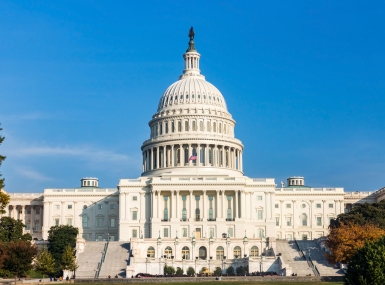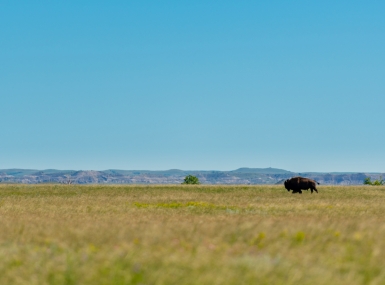
2014 was a good news-bad news year for public lands counties those that receive payments from the federal government for nontaxable federal lands within their borders.
And the good news was only temporary.
Congress funded the Payment in Lieu of Taxes (PILT) program for FY15 but not beyond to the tune of $442 million. But it didn't make the program permanent, as counties desired, that is, a multiyear program not subject to the vagaries of annual appropriations.
PILT compensates counties containing extensive federal land holdings because that acreage is exempt from local taxation. The funds support counties' costs of providing fire protection, law enforcement and search and rescue operations, among others.
The bad news was that a related federal program, the Secure Rural Schools and Community Self-determination Act, SRS for short, expired last September and wasn't reauthorized. SRS "county payments" benefit counties flush with nontaxable federal forestland to help fund schools, roads and law enforcement, and invest in projects that enhance forest health.
"Counties are in the dilemma of already being into our budget year and having that source of funding kind of in limbo," said Ron Walter, a Chelan County, Wash. commissioner and chairman of NACo's Public Lands Steering Committee.
He said counties' short-term priority is securing SRS funding for an additional year. "But I think it's also important that we work with this new Congress for a long-term solution for both PILT and SRS, and forest management. They all tie together."
In some counties, 80 to 90 percent of the land is federaly owned. The federal agencies that manage the vast majority of these lands are: the Bureau of Land Management, 248 million acres; the U.S. Department of Agriculture Forest Service, 193 million acres; the U.S. Fish and Wildlife Service, 89 million acres; and the National Park Service, 80 million acres.
Instead of receiving SRS payments this year, forested counties will get a fraction of what they did in 2014, under what's known as the 25 Percent Fund Act of 1908, a precursor of SRS. In 2014, 41 states and Puerto Rico received $300 million in SRS payments. This year, under the 1908 Act, they'll receive payments totaling about $50.4 million, according to the Forest Service. Unlike SRS, the 1908 Act payments can only be used for schools and roads.
"The federal government is asking counties to be innovative and creative and come up with their own revenue," said Liz Archuleta, a Coconino County, Ariz. supervisor and chair of NACo's Public Lands Steering Committee's payments subcommittee.
"We can't come up with our own revenue when it comes to federal lands," she added."And that's why we need support from the federal government."
Because National Forest counties are entitled to more PILT funding if they do not receive SRS funding, the two programs are closely linked.
The Ball is in Congress' Court
U.S. Sens. Mike Crapo (R-Idaho) and Ron Wyden (D-Oregon) recently introduced bipartisan legislation to renew SRS and make PILT permanent, the Secure Rural Schools and Payment in Lieu of Taxes Repair Act. It would extend SRS for three years at 2011 funding levels, providing about $360 million a year to more than 700 U.S. counties.
Though details are thin on how PILT would be restored, Wyden has said, "Our bill would keep the promise made to local governments in 1976 that the government would mitigate for the lost tax revenue by restoring mandatory funding status to PILT."
Jeff Burrows is chairman of the Ravalli County, Mont. Board of Commissioners. "Our county doesn't look the same if PILT isn't reauthorized," he said. "It would mean RIFs and structure changes, and spending capital reserves down to nothing. It would be an ugly situation."
In the House, leadership and the committees with jurisdiction over the issues are working on legislation that would provide relief to the counties losing SRS payments. The challenge is how they would fund it, observers say.
Meanwhile, counties are poised to do the best they can with the 25-percent money they receive. Graham County, N.C. (64 percent forestland) received $222,000 last year, but will get about $45,000 for 2015. To make up the difference, the county might have to raise its millage rate by about 2 cents, according to Greg Cable, Graham County manager. His county includes the Nantahala National Forest.
The Sheriff 's Department alone spends "200 to 300 man-hours" a month on federal land, he said. And that doesn't include EMS or local rescue squads "going out on the Appalachian Trail to rescue a fallen hiker."
"If you look at the amount of monies that we receive per acre for federal lands," he added, "it's quite a bit less than what the private landowners pay in taxes. Substantially less," Cable said. "So the federal government receives these services at a much more discounted rate than what everyone else (local taxpayers) pays."
Local Economies Still Struggling
In Alaska, the Tongass National Forest, in Ketchikan Gateway Borough,is the nation's largest national forest (17 million acres). "Most of our forested communities have a very difficult time getting other business to come up to a state like Alaska and do business," said Kathie Wasserman, executive director of the Alaska Municipal League. "Even if we get some alternative timber industry to come up here, they're always very concerned that our energy prices are terribly high."
The state is also running a "huge deficit," as much as $3.5 billion due the effects that falling oil prices have had on anticipated revenues. "Every dollar is going to mean something to us this year," she said.
Back in the Lower 48, Arizona received $14.9 million in SRS in 2014 and will receive less than one-tenth that amount $1.3 million in 1908 Act payments this year. In Coconino County, that translates to about $360,000 in 1908 Act money this year. It netted $ 4.3 million from SRS in 2014, according to Joanne Keene, the county's government relations director.
As an example of the impact on education, Archuleta cited the fate of schools in rural areas of the 11.9-million-acre county "larger than Switzerland" and the state's largest. Some schools in remote parts of the county have only a single first-grade class; absent SRS, there'd be no support for that grade level. Instead, children would have a two-hour, roundtrip daily bus ride to attend another school.
Think Tank Advocates for Trust Fund
Though providing some certainty, three years of guaranteed SRS funding would still be a medium-term solution. For the long haul, one idea that's being discussed by some is the creation of a national Natural Resources Trust. Revenue from commercial activities on federally owned land be it mineral extraction or timber harvesting, for example would be invested in a trust. The fund would make payments to state and local governments, or back to the federal treasury to lower the cost of appropriations, said Mark Haggerty, an economist and policy analyst with Headwaters Economics, a nonprofit, nonpartisan think tank in Gallatin County (Bozeman), Mont.
Headwaters outlined the concept in a December 2014 policy brief, Rethinking Public Land Revenue Sharing: Utilizing a Natural Resources Trust to Address Volatility, Equity and Incentives.
"That might give us the political coalition that we need to say, 'We're going to need 10 more years of appropriations to give us time to invest in this trust, to allow that trust to build up so that counties will to be paid essentially out of the interest earned or a distribution on the principal on that natural resources trust.'"
Whatever the solution, Cable perhaps summed it up best. "We need to figure out a way to provide the necessary education to get the PILT and SRS out of the political arena and get it more into the aspect of this is a federal obligation to the local governments who are providing services to our federal agencies that are operating in these respective counties."




